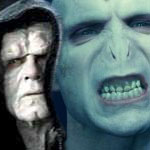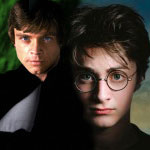Dramatic Structure Diagrams
Dramatic structure diagrams are tricky and confusing. Thousands exist praying different paradigms of narratology. Check out our preferences.

 This article is an attempt to help you understand how most stories are structured by their writers.
This article is an attempt to help you understand how most stories are structured by their writers.
Narrative structures were not invented, yet, they were observed through time, converging to a natural and innate human pattern.
Narrative structures were not created, yet, they were observed by writing philosophers during antiquity and have been discussed over and over by scholars. They found out that pleasing tales, usually follow a pattern that the human mind accepts and uses to tell stories in a pleasant and understandable way.
Based on the classic period in Greece, we teach our children that a story needs to have a Begining, a Middle and an Ending. That is nothing more than a simplification of the 3-act structure so widely used in stage drama classes all over the western world.
The 3-act model has been around for quite some time and recently a 4-act structure has become more commonly used.
I do not wish to get too technical or even fill your head with times, dates and definitions, but just to fix an idea of how things can be structured. Let’s take a look at the following chart.
The chart has a comparison of the two structures that I like the most.
The first paradigm was developed by Christopher Vogler based on the studies initiated by Joseph Campbell and his theory of “The Man with a Thousand Faces”.
The other is a modified 4-act structure to facilitate a comparison with the previous.

* Meeting with the Mentor can float a little bit. Sometimes it’s in the 3rd position. Sometimes even in act 2
The Trigger, also called Point of Attack is a plot point on which a PROBLEM occurs; the protagonist struggles in embarking the solution-journey and then something happens (Inciting Event) that pushes him/her towards the Extraordinary World. Sometimes the trigger is quite fast, and the Hero embarks on the adventure quite quickly.
If you are wondering what a Contagonist (co-antagonist) is, let’s just say, for now, that he is the one, or those, who help the Antagonist, or Villain.
Note that some aspects of Act 1 may overlap the trigger, keeping their functions of presenting new places and characters that are familiar to the Ordinary World.
One other thing that is important to remember is that the Ordinary World can be quite wondrous to us while still very common to the Protagonist. It is an interpretation made from the hero’s point of view.
So, the sequence goes like this:
-
The protagonist and other satellite characters are living “his” normal life in the Ordinary World.
-
A problem occurs, and he is called to take a position, to help solve that problem. He meets a Mentor that calls him to action. The Protagonist struggles, uncertain if he has the ability for such task, or can accomplish it. An Inciting Action happens and pushes him to enter the Special World (aka, Extraordinary World).
-
He/She faces a sequence of tests. First from the Villains Helpers/Contagonists, then by the Villain/Antagonist himself. Due to some lack of ability or knowledge, the Hero suffers a major drawback, sometimes almost dying.
-
Something happens, or is learned, or taught, (by helpers) that brings new strength or knowledge that will make it possible for the Hero to face the Villain, with a much greater chance now.
-
Either a Preparation Phase, or a Recounting Phase (even both), occurs as a setup fo the next struggle.
-
A final confrontation takes place. The hero wins (unless it’s a tragedy). Antagonist either, dies, or becomes unable to do any harm.
-
The Ordinary World is restored, but different than before.
If you observe the vast majority of popular and good stories, you will find at least hints of that sequence.
We are trying to use that paradigm in some of our reviews like the ones about J. K. Rowling’s Harry Potter series. The link will take you to her mini-bio where you can find a list of the books.
I hope this article changes the way you read books and watch movies and series with a new form of interpretation.
If you want to have some clues about characters, don’t miss my article about Archetypes.
Leave a comment with your opinion, plese.
[cta id=’1970′]


Thank you,
a great way of narrowing it down. I appreciate that. I guess most people knows there is a structure behind every story, but I’ve rarely seen it narrowed down this easy AND understandable.
You obviously know a lot about this, do you have any reference (books/courses/anything), (easy and understandable) to learn some more? It’s an interesting subject and I can see a lot ways to use those patterns or structures in other areas than drama.
Hope to hear from you 🙂
Hello, OHHveding,
Thanks for sharing your thoughts. You can start from this website: http://storymind.com/dramatica/
It is run by, Melanie Ann Phillips, an expert in narratology,
Cheers!
Hey
I loved your article on the structure of books. I am an avid reader and always knew that it was broken in to sections but your article and diagram cleared it up so well for me.I loved the way you broke it down so well and explained each section. Great job and I look forward to reading more from you.
Kevin
Hello, Kevin,
I’m very pleased to know that you found the article interesting and that you are willing to come back for more. I look forward to seeing you around.
Cheers!
That’s a really interesting way of explaining how story lines are written. I had never really took notice to that, but since reading this article, I can see the relation in most movies and books that I’ve seen/read.
I read a variety of different genres of books and watch movies of the same variety, so this was really interesting for me to see how story lines all follow a similar pattern across the board.
Thanks for sharing this and I look forward to seeing what else you have to share!
Cheers!
Nicki
Hello, Nicki,
Thanks so much for sharing your experiences and kind words of support. I would be very pleased to see you around and share more ideas about stories.
Cheers!
I have always wanted to get into writing stories, and I have long wanted to maybe start with writing some fictional stories, based upon my life experiences. I think that I would make for an excellent writer, but I don’t know how to get started.
Are you aware of any resources that would be good for learning how to formulate my thoughts into writing form, and ultimately a book?
Hello, Christian,
As a matter of fact, I do. You could seek for Melanie Anne Phillips (http://melanieannephillips.com/). She is an expert on the Dramatica Theory (Dramatica.com) and Narrative Psychology. She and Chris Huntley developed the Dramatica Pro Software. They have a shorter version of it that is called Writer’s Dream Kit, which I think is a great starter option.
Browse around Melanie’s and Dramatica websites, read the theory, and you will learn tons of information about creative writing. I have been using and studying their system for the past 20+ years and am very satisfied to recognize that I learned a lot with them.
Thanks for sharing your impressions.
Cheers!
You made something I would not have found interesting…..interesting. Keep up the great work and thank you for that read, it was very easy to understand.
I also like how you have all the different genres, in your menu for easy access. How many reviews can you usually do in a day-week?
Hello, Joe,
Thanks for your words of support. I can manage to transfer about 4 reviews from the old blog to this website per week. I would be able to do more, but I’m busy with other stuff at the moment.
Very good info. There is indeed a formula and structure coming up over and over in all stories. I like writing myself and always wanted to get something out there. I am more the creative type and have a hard time with structure. Its interesting to try and flesh out a scene with structure in mind first. Thanks again for the great post.
Hello, Pierre,
Thanks for sharing. Keep writing and reading. Cya!
I printed your guide out and I am going to watch a movie tonight and use your guide throughout the movie. I can already tell that it will change the way I watch. I think it will result in an entirely different perspective.
I remember much of this from my college writing class. Nice refresher.
Hello, Josh,
I hope you have great fun with it. Thanks for sharing your experience, and, please, come back to tell us how it was.
Cheers!
Really enjoyed this. I teach structure diagrams to my students although perhaps not in such an in depth way. I like how you introduced the archetypes/stock characters into the structure as well. I’ve always found that Star Wars works very well as a model for this structure.
Thank you 🙂
Hello, Jimmy,
Yes, definitely! George Lucas followed Joseph Campbell’s model by the book. Perhaps you would be interested in taking a look this project that is still under construction: PlotBlender.
Thanks for sharing your experience and support. Cheers!
Hey there,
Thanks for sharing with us how to structure a dramatic story-line. I’m back to writing fiction and found your post really helpful in imagining a rough outline of how the story is going to take place and how it’s going to an end.
Thanks for sharing!
Cheers,
Anh
Hello, Anh,
Good luck with your project and thanks so much for sharing your impressions. Cheers!
Very clean and simple to understand. Great article. Thanks.
Hi, Nora,
You may also be curious about this one: Simple Dramatic Archetypes. Thanks for your kind words. Cheers!
I create music and there is a structure to it. I am sure photographers, painters, and other artists have a structure to their art. This post was VERY interesting to me because I never really thought about an author have a structure to how they go about writing their book, it should be something we all know but we overlook. Amazing post and amazing website.
Hello, Bassam,
Thanks so much for your words. I’m writer and a fine artist too. You are absolutely correct. Our minds do that, don’t they? Cheers!
Hello,
I just loved how you summarized everything into a simple dramatic model. It really does help beginners to understand how the story mind works. Thanks for the great article.
Hello, Chinilla,
Thanks so much for the kind words. Cheers!